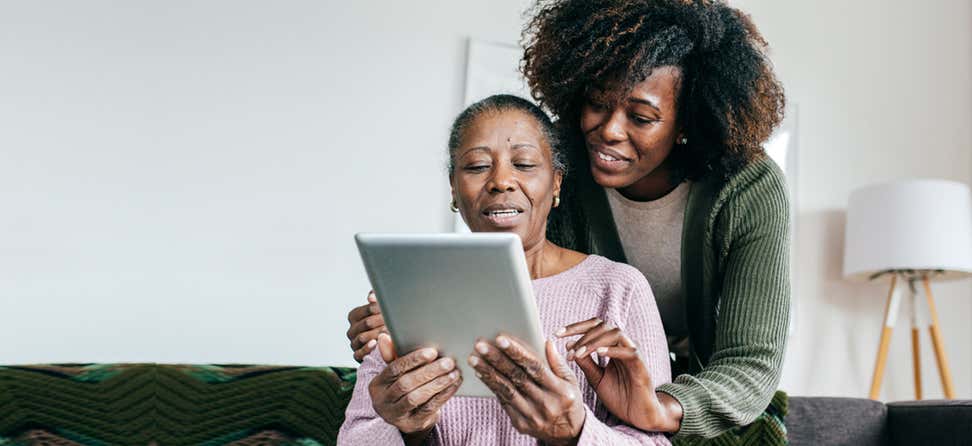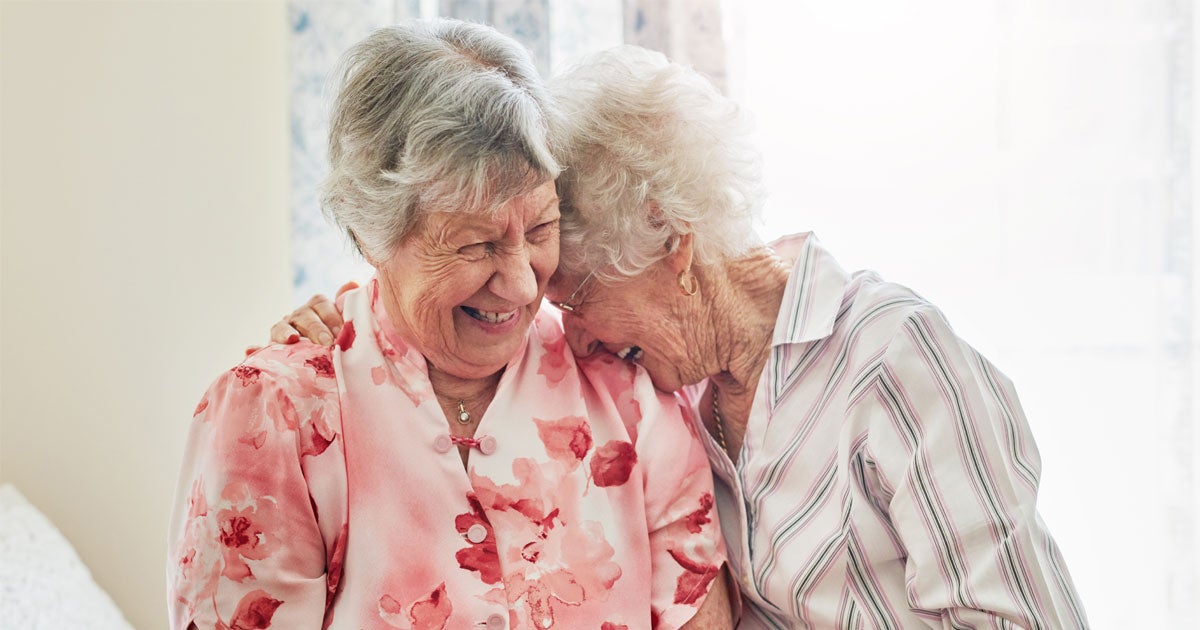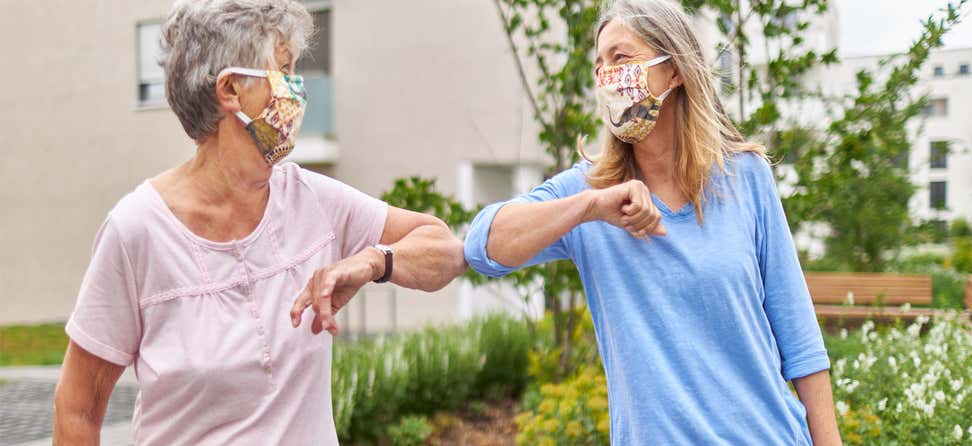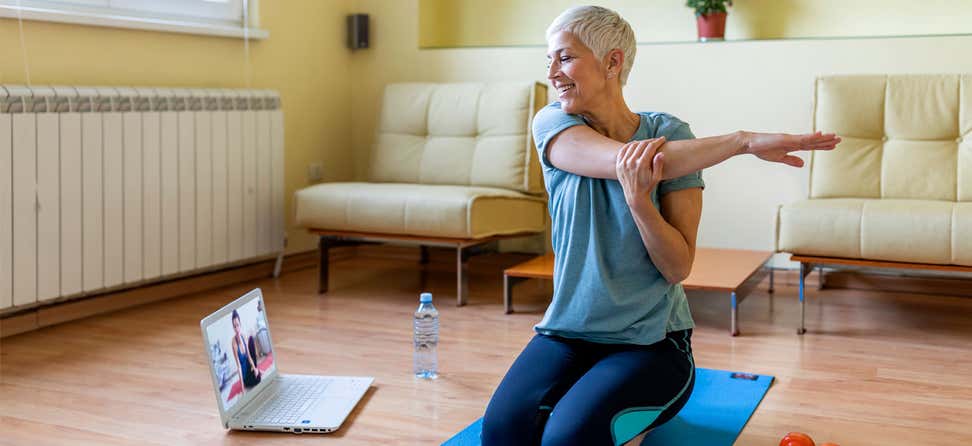Key Takeaways
According to a study conducted by the Older Adults Technology Services from AARP (OATS), 22 million U.S. seniors lack broadband internet access at home.
OATS estimates that approximately 40% of older adults were not able to access needed online services from their homes during the pandemic.
As many in the Aging Network know, connectivity issues have existed for many years, but the pandemic brought the crisis of connectivity to light.
In the past, many people viewed the internet as a way to stay connected with friends or as a hobby; however, during the pandemic, it was clear that the internet has become a lifeline for much needed services such as ordering groceries or doctor visits. Access to the internet during COVID-19 is also a way to connect with family and friends which can help to reduce the risk of social isolation. Social isolation has been shown to significantly increase a person’s risk of premature death and reduced quality of life.
Older adults strugging to get access to much needed online services
Despite barriers, older adults are adapting to this shift, and the number of Medicare beneficiaries using telehealth services grew drastically during the coronavirus pandemic. Between mid-March and mid-October, over 24.5 million out of 63 million beneficiaries had received a Medicare telehealth service.1 Yet, many older adults have not been able to make the transition to online engagement. The Older Adults Technology Services from AARP (OATS) estimates that approximately 40% of older adults were not able to access needed online services from their homes during the pandemic.2 Access to technology is not equal across all groups.
A recent study showed that participants who were older, less educated, economically disadvantaged, and from ethnic groups were up to five times less likely to have access to digital health information.
As many in the Aging Network know, connectivity issues have existed for many years, but the pandemic brought the crisis of connectivity to light. One of the keynote presentations for the 2021 On Aging conference was on Technology: The “Great Equalizer” of Society. During the session, the speakers shared about the current landscape of the digital divide and what community-based organizations (CBOs) can do to help.
Panelists during the session emphasized that, with the increased focus on connectivity, now is the window of opportunity to make a difference in the digital divide. The first step has been to determine how many people do not have access to the internet at home to better understand the scope of the problem. Yet, this has been difficult to determine since the broadband infrastructure has been operated primarily by the private sector. In January 2021, OATS released a report, in partnership with the Humana Foundation, that found 22 million (42%) of American seniors do not have in-home internet access. There is a pronounced urban-rural divide. To better capture this data, it will be important to use a public-private partnership approach.
An older adult in a rural area is 1.6 times more likely to lack in-home internet service.3
If broadband is available, affordability for older adults is the next concern
The average cost of internet services in the US is $68.38/per month.4 One of the ways to help make internet services more affordable is the Emergency Broadband Benefit. This benefit started on May 12, 2021, and it provides the following for eligible households:
- Up to $50/month discount for broadband service;
- Up to $75/month discount for households on qualifying Tribal lands; and
- A one-time discount of up to $100 for a laptop, desktop computer, or tablet purchased through a participating provider.
Individuals can apply for the benefit by contacting their preferred participating provider directly, online at getemergencybroadband.org, or by mail.
How to help older adults connect to broadband services
Tom Kamber, from OATS, shared that other subsidies are underutilized. One way individuals can find information on these subsidies is by using the zip-code tool from Aging Connected. Aging Connected is a national, cross-sector campaign to address the digital divide and help older adults have access to affordable and accessible internet services. Aging Network professionals may also consider joining or using resources from the National Digital Inclusion Alliance, which is a community of digital inclusion practitioners and advocates. The Aging Network needs to be aware of these much-needed benefits to help connect seniors to broadband services.
Access, affordability, now making sure older adults can use technology
Access and affordability are only two parts of the equation to help older adults get connected. The third component is to make sure that seniors know how to use technology and feel comfortable doing so. This is where CBOs have been playing a large role during the pandemic. For resources and lessons learned from our partners, be sure to visit our resource guide for remote delivery and Grand Round presentations.
There are also online training programs for older adults offered through organizations such as:
Even once we can safely reconvene in person, the issues of access, affordability, and ability to use technology will not disappear, and now is the time to take action.
Sources:
1. Permanent Expansion of Medicare Telehealth Serbices and Improved Payment for Time Doctors Spend with Patients. Found on the Internet at https://www.cms.gov/newsroom/press-releases/trump-administration-finalizes-permanent-expansion-medicare-telehealth-services-and-improved-payment.
2. Report: 22 Million U.S. Seniors Lack Broadband Internet Access. Found on the Internet at https://www.businesswire.com/news/home/20210127005243/en/Report-22-Million-U.S.-Seniors-Lack-Broadband-Internet-Access-First-Time-Study-Quantifies-Digital-Isolation-of-Older-Americans-as-Pandemic-Continues-to-Ravage-Nation
3. Aging Connected Report. Found on the Internet at https://agingconnected.org/report/.
4. The Cost of Connectivity. Found on the Internet at https://www.newamerica.org/oti/reports/cost-connectivity-2020/global-findings/











